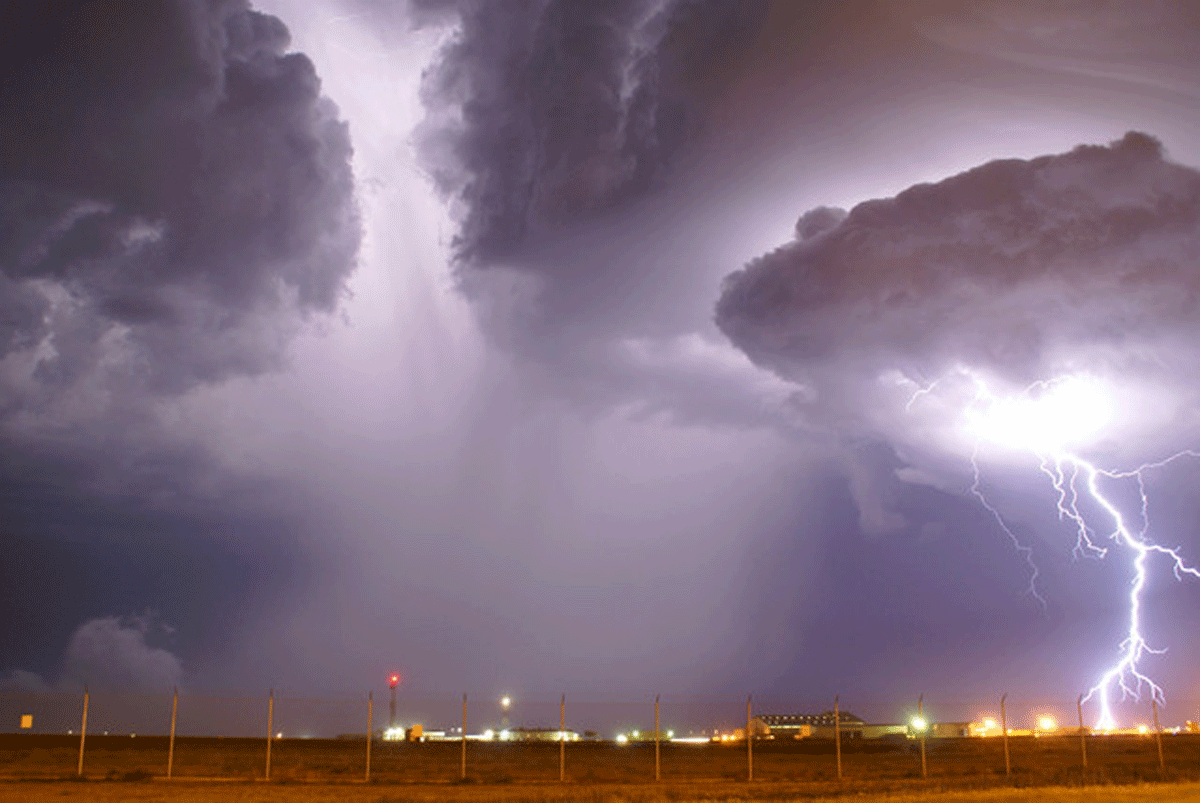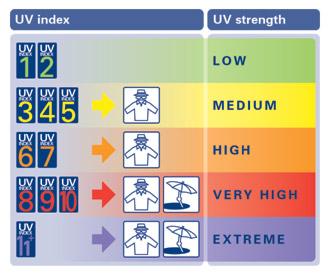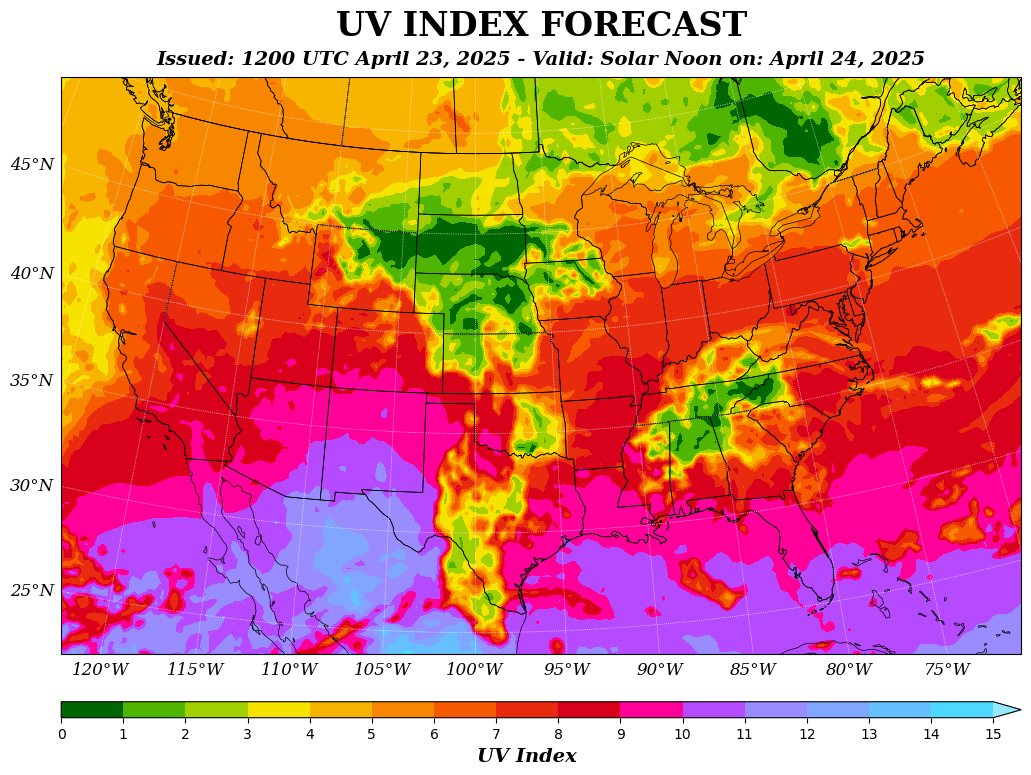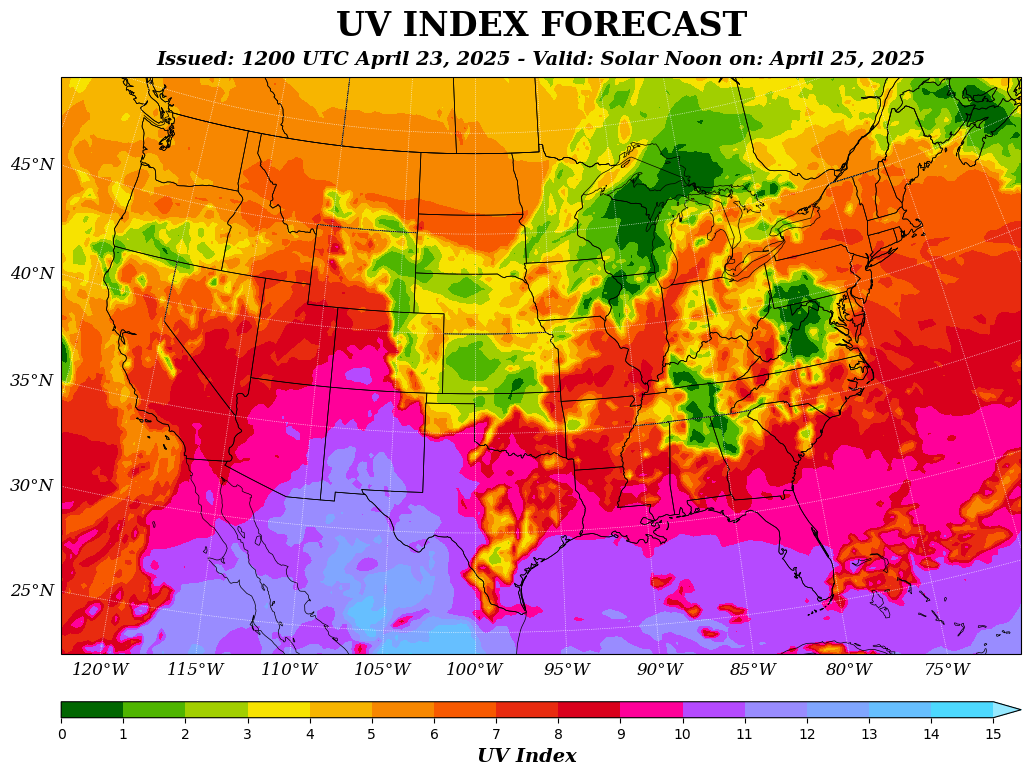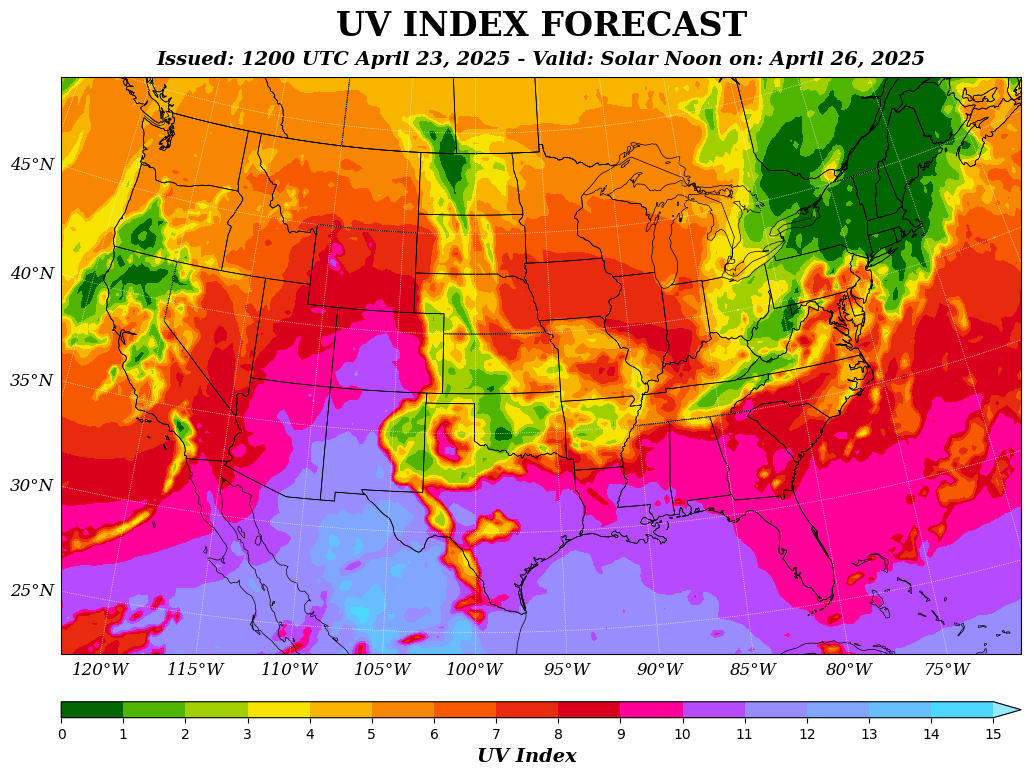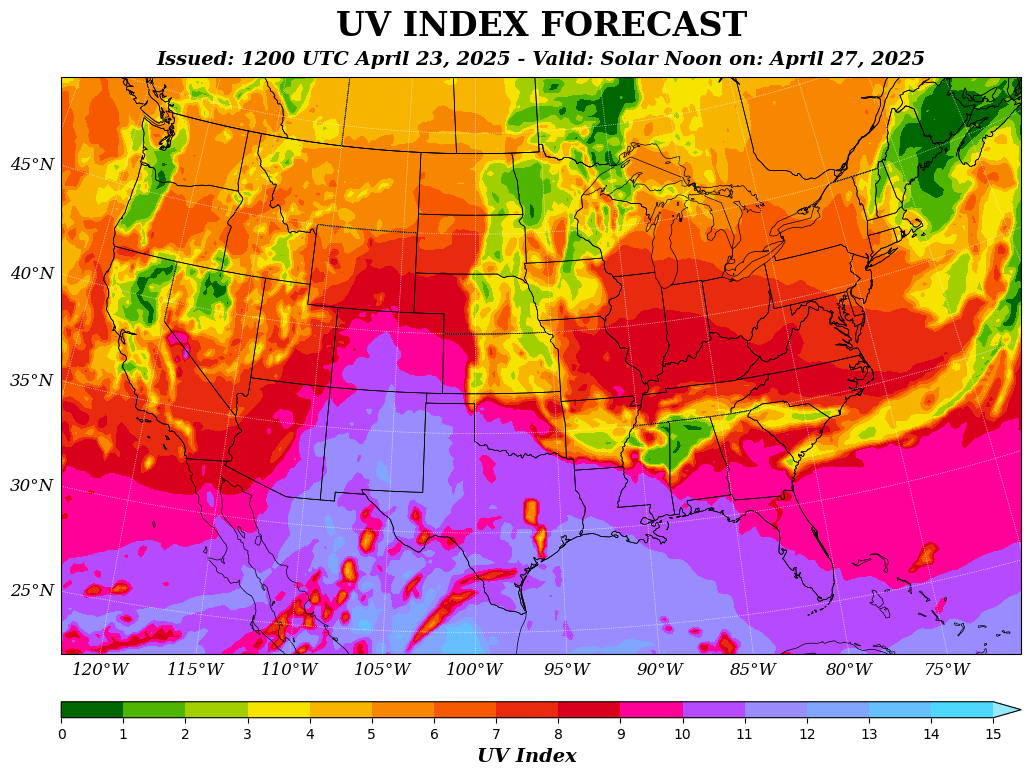UV Index Forecast
What is the UV Index?

Some exposure to sunlight can be enjoyable; however, too much could be dangerous. Overexposure to the sun's
ultraviolet (UV) radiation can cause immediate effects such as sunburn and long-term problems such as skin cancer
and cataracts. The UV Index, which was developed by the National Weather Service and the U.S. Environmental Protection
Agency (EPA), provides important information to help you
![]() plan your
outdoor activities to prevent overexposure to the sun's rays.
The UV Index provides an indicator of the expected risk of overexposure to the sun. The Index measures UV intensity
levels on a scale of 1 to 11+, where low indicates a minimal risk of overexposure and 11+ means an extreme risk. The UV
Index takes into account clouds and other local conditions that affect the amount of UV radiation reaching the ground.
By taking a few simple precautions, you can greatly reduce your risk of sun-related illnesses.
plan your
outdoor activities to prevent overexposure to the sun's rays.
The UV Index provides an indicator of the expected risk of overexposure to the sun. The Index measures UV intensity
levels on a scale of 1 to 11+, where low indicates a minimal risk of overexposure and 11+ means an extreme risk. The UV
Index takes into account clouds and other local conditions that affect the amount of UV radiation reaching the ground.
By taking a few simple precautions, you can greatly reduce your risk of sun-related illnesses.
Sun Safety Steps
|
